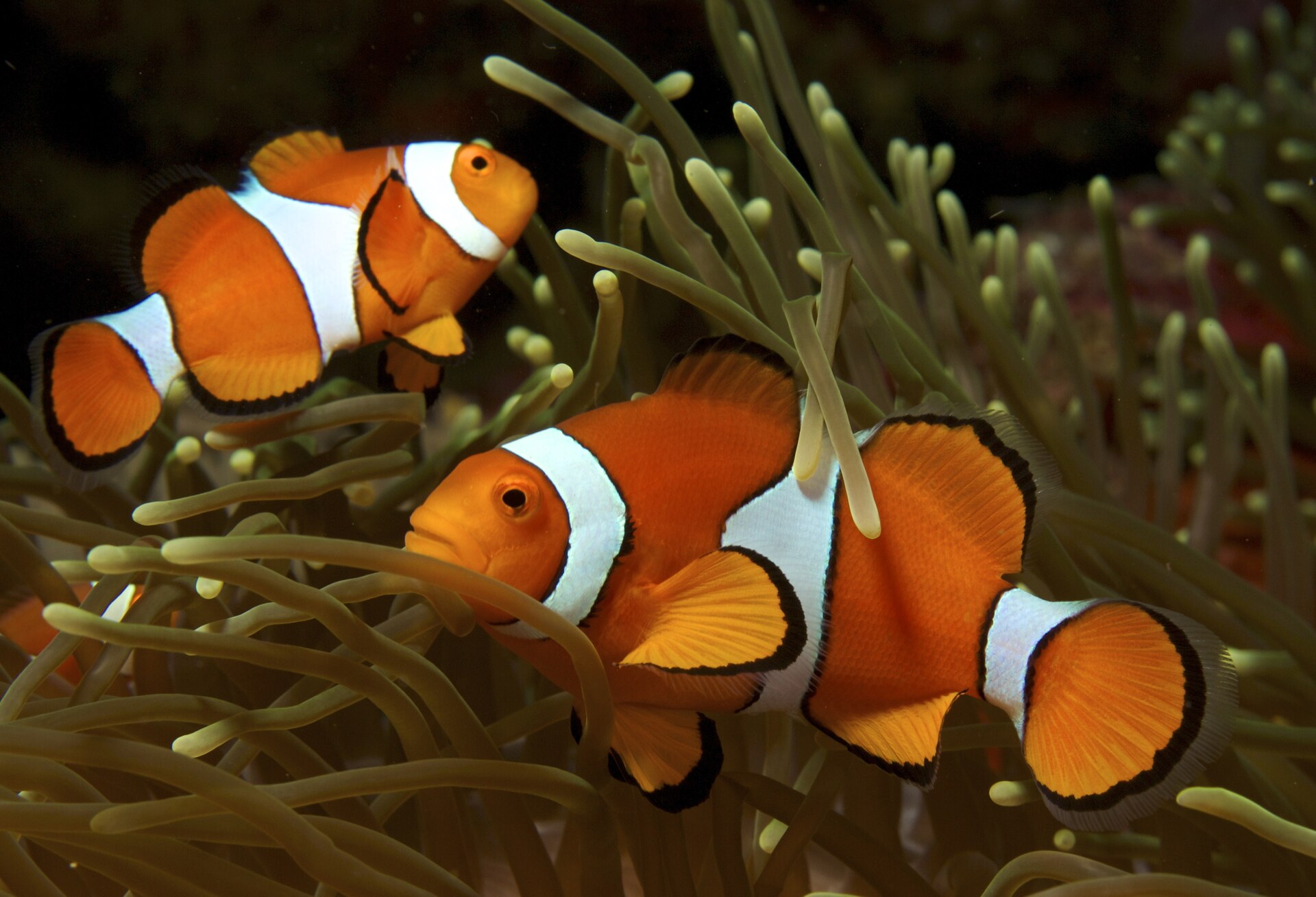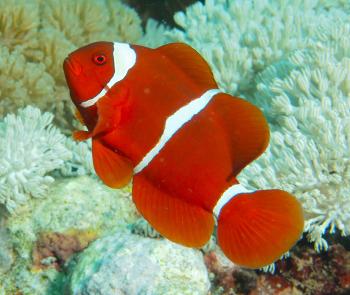
Symbiosis is any type of a close and long-term biological relationship or interaction between two organisms of different species. Some anemones have these relationships.
Symbiosis is any type of a close and long-term biological relationship or interaction between two organisms of different species. Some anemones have these relationships. Perhaps the most well-known example is the one between tropical anemones (Heteractis magnifica) and clownfish (Amphiron ocellaris). This relationship benefits both species: the anemone provides the clownfish a home and protection; the clownfish provides the anemone nutrients from their waste and also scares off predatory fish. This type of symbiosis is called mutualism.
Anemones have stinging cells, called nematocysts that release toxins when intruders touch one of their tentacles. The toxins paralyze the animal, allowing the anemone to bring the prey into its mouth. How are the fish not harmed? Clownfish secrete a substance in the mucus covering their bodies that suppresses the firing of nematocysts. This allows the clownfish to swim between the tentacles of anemones without harm.
I’ve Got Your Back
This clearly benefits the clownfish, but how about the sea anemones? The brightly colored clownfish attract other fish looking for a meal, and these would-be predators are then caught and eaten by the anemones. Research shows that clownfish poop, rich in ammonia, acts as fertilizer to the anemone.
Another creature that has the same kind of relationship is the anemone shrimp (Periclimenes inornatus.) As it name suggests, this shrimp lives within anemones. The shrimp use their home anemones for shelter and to hide from predators. They feed on anemone leftovers and plankton particles that come through.
Partnering with Algae
Not all anemones have symbiotic relationships with animals. Some anemones have symbiosis with microalgae. In these cases the host anemone gets sugar from the algae and the algae gets nutrients from its anemone as well as exposure to light. These anemones aren’t tropical like those described above, but temperate. One example is Anthopleura species, green anemones, that have both algae and dinoflagellates living within their tissues that are photosynthetic (they get their energy from sunlight), providing the anemones with nutrients as well. By the way, the bright green color is not from the algae but from the anemone itself.
The anemone and its algae form a kind of partnership. Scientists question how well host animals and their symbionts might do in times of environmental changes, like climate change. The ‘partners’ have independent life cycles with different needs.
Researchers at UC Davis looked at green anemones (Anthopleura spp.) and their symbiont partners (Breviolum muscatinei) that live on the Pacific coast of North America. The anemones and symbiotic algae live in the intertidal that experiences temperature extremes. They wondered how the partners and individual animals would manage in changing ocean temperatures. The scientists looked at the genetics of both and their results suggest that in Anthopleura spp., the algae are more likely than their host anemones to be able to adapt to conditions specific to a location, “and that symbiont populations are more likely to be able to match changing conditions as water temperatures warm due to climate change.”
















